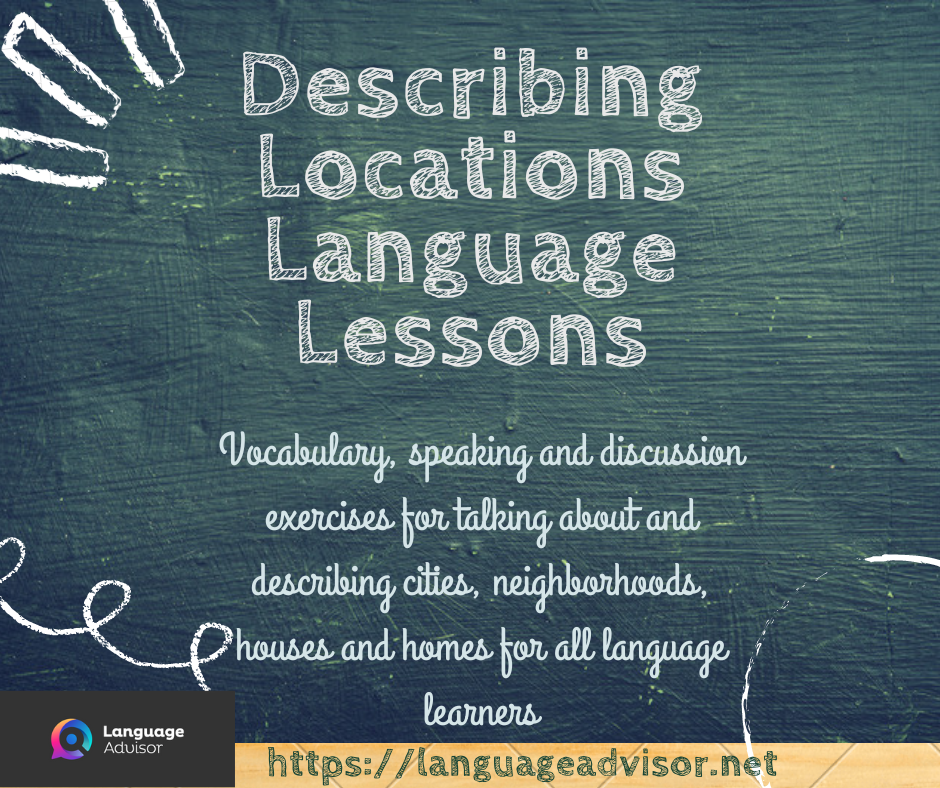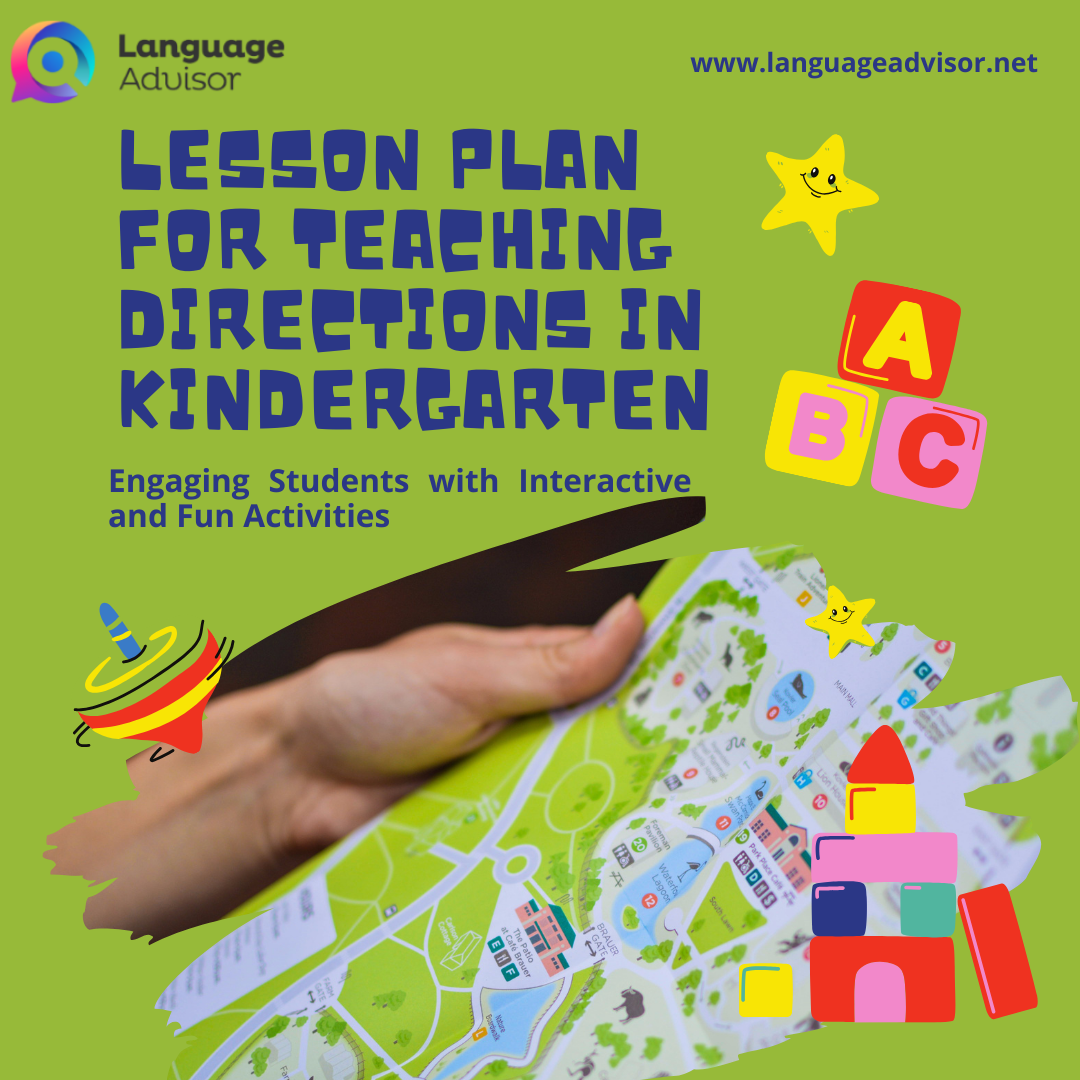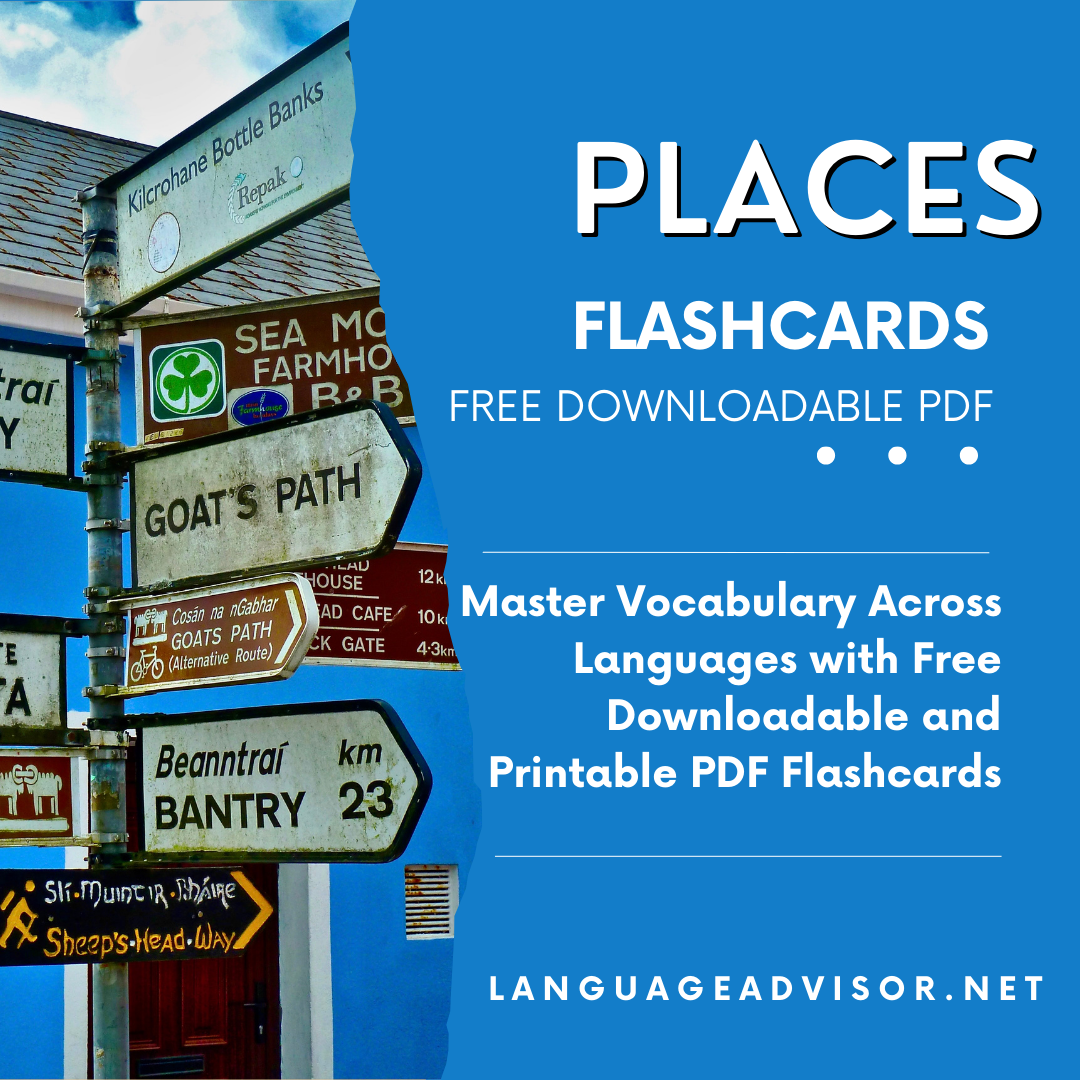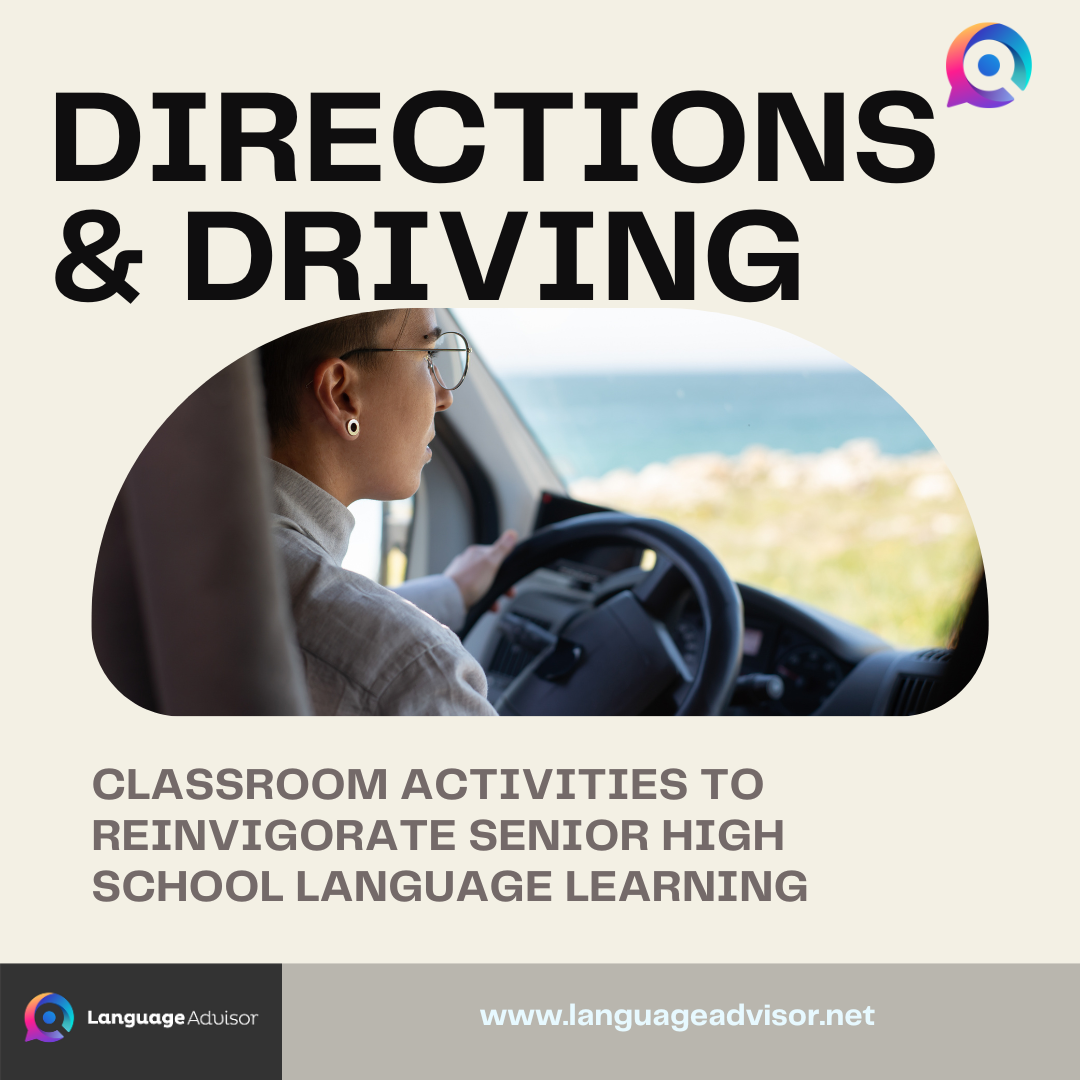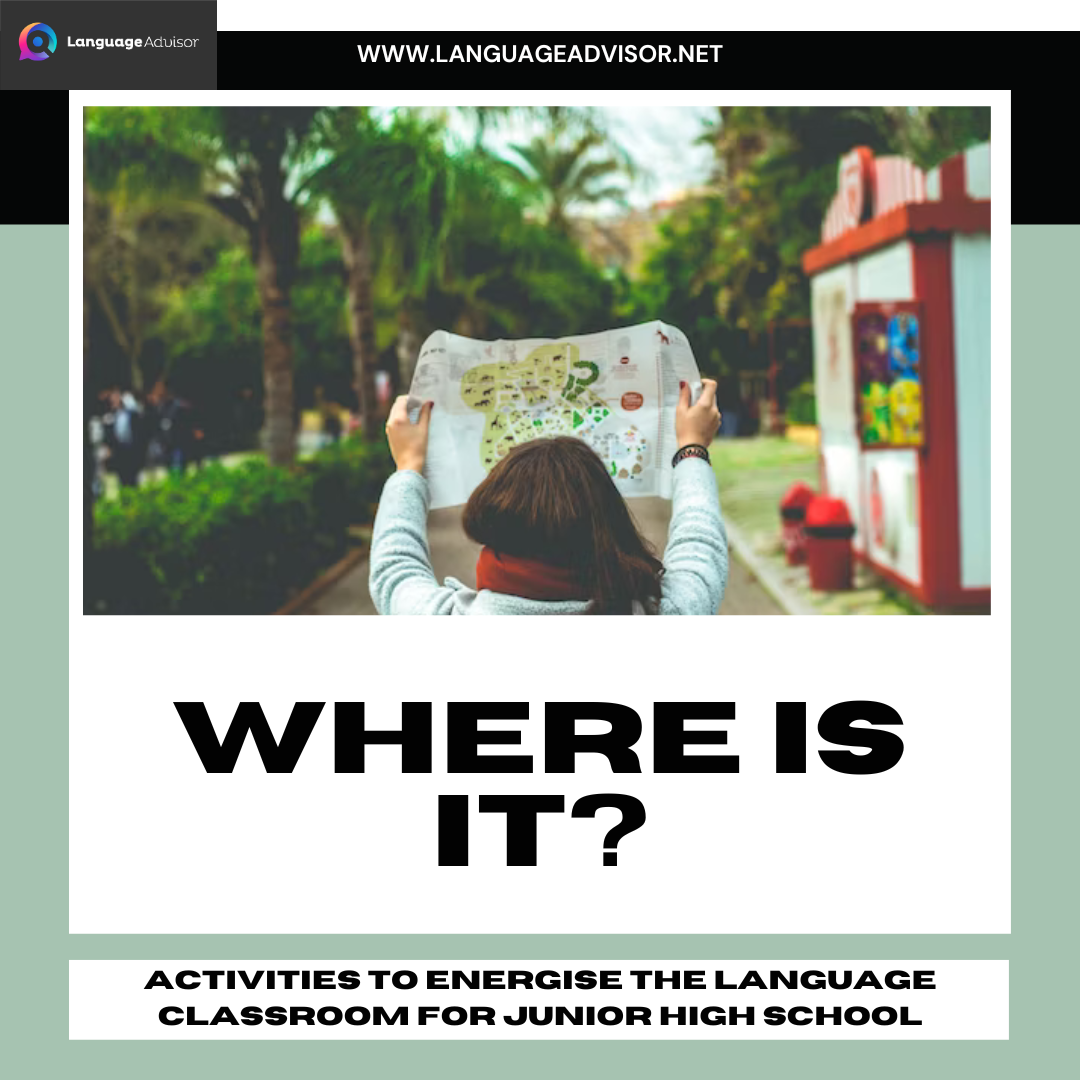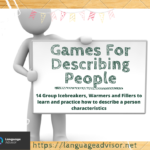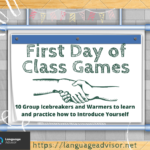Describing Locations Language Lessons for all levels and ages. Describing places language lessons and teaching ideas
Describing Locations Language Lessons
Fun Spelling Games in Classroom
Vocabulary, speaking and discussion exercises for talking about and describing cities, neighborhoods, houses and homes for all language learners
This article provides teachers with individual and group writing and speaking activities designed to teach language students how to describe location and how to give directions.
Students practice the language of location in relation to themselves and classroom objects.
With languages, you are at home anywhere
~
Edward De Waal

Describing Locations Language Lessons
Vocabulary, speaking and discussion exercises for talking about and describing cities, neighborhoods, houses and homes for all language learners.
These activities can all be adapted and used at different points of your lesson.

BLIND DESCRIPTION
Tell your students they have to imagine to describe their home to a blind person. They have to describe in detail everything about their house, while each partner draws it. At the end they can exchange drawings and write out their descriptions.
You can also tell them to describe a place or a location.

TREASURE HUNT
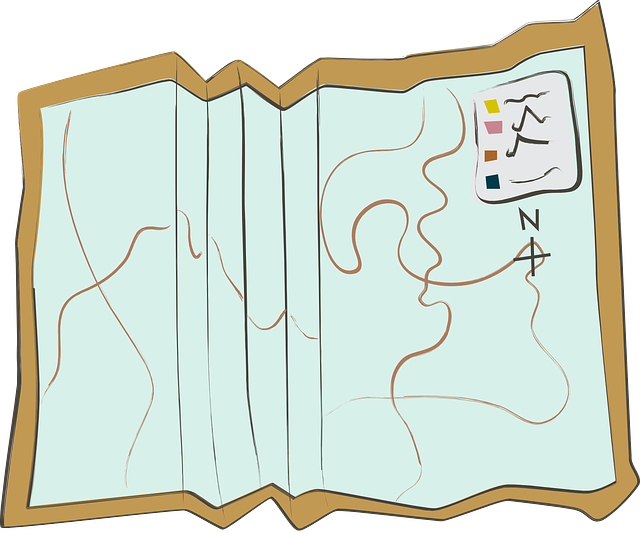
Write a sentence of about seven words with each word on a separate piece of paper. Leave the pieces of paper pinned to the walls in different parts of the school. On each piece of paper you should write instructions in the target language of where to find the next piece.
Like this: Go upstairs, turn right and look beside the fourth door on the left.
The students follow the instructions, making a note of the seven words that they find. They then put the words into the correct order.


VISUALIZATION
This is a perfect writing warmer.
Tell your students to visualize a place while you read its description.
They then will draw it and use that drawing to write a composition (as homework if you don’t have enough time).
This activity is more effective when accompanied by instrumental music.

GUESS THE PICTURE

Choose a picture of a location, then show your students a small part of the picture. Ask them in groups to discuss what it might be – you can put some of their ideas on the board if you wish.
If you don’t hear any nice ideas, you can try gradually revealing some other parts of the picture.


MAP IT
Show a map of your country or another country that your students know well. Show them where you went on a trip and tell them about it.
Then call on several students to do the same. The trip can be truthful or fictional, of course.
You can use Google Maps and Satellite imgages to make it more realistic and fun.


DESCRIBE IT
Describe something observable in the classroom (while not looking at it), and tell your students to point in the direction of what you described and write it down. Who guessed right wins a point.

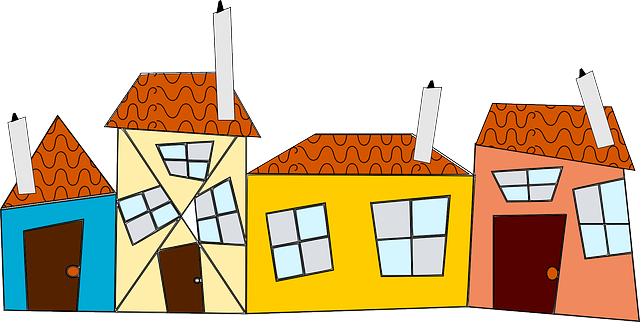
NEIGHBOURS
Give each student a piece of paper and tell them that, working alone, they have to draw on it a house. When the houses are drawn, they are to fold the papers in 2 so that the houses cannot be seen. Collect the papers, place them in the center of a table and shuffle them.
Each students then picks one and unfolds it. Ask one at a time to describe in details the house, its occupants, neighbours, furniture, colours, location and everything they can think of.

PLAN A BROCHURE

Divide your students in groups and have them select a destination to plan a brochure for. Their mission is to attract more tourists.
They can assign roles within the group, such as organizer, artist, writer, etc. and plan out the brochure.
They can use Canva to make it real and fun.


MY NEW HOME
Your students are going to buy a new home, get them to list off their priorities. For example:
- It must face South
- It must have a lot of natural light
- It should have nice views/Nice location
- It must be near the countryside
- I prefer a house to a flat
- It must have amenities nearby (parks, mountains, culture centres, sports centres …)
- I want my privacy
- I would not live in a tough area
- My flat has to be in the city centre
Inside the house, the most important thing can be …
- A balcony
- Two bathrooms
- A big TV
- An enormous bed
- A really comfortable sofa
- Book shelves
- Big kitchen
- A fire place
- A big bath
- Distribution of the house (the lay-out), ie having the bedroom far from the
- kitchen or living room
Then ask them to go online and look for a house that has those requirements. The website needs to be in the target language and the location in a place that speaks predominantly that language.


SIMON SAYS GO STRAIGHT
This activity is based on the children’s game “Simon Says“. This game can be used very effectively to teach directions vocabulary.
Procedure
First teach students the key words and actions in the target language. For example, teach students the word ‘walk’ and mime walking on the spot. Then teach them ‘turn right’ and mime turning right. Do the same with other key phrases such as turn left, go straight, stop, keep walking, etc.
Once students have practiced enough, start the game. Tell your students to follow your directions, only if you say ‘Simon says…’ first (or ‘Teacher says…’ / ‘Tom says….’, etc.). From time to time give students directions without saying ‘Simon says…’ first, and if any student still does the action, then that student is out, and must sit down. This game is incredibly fun and encourages students to listen carefully. Once students have practiced a little, try giving the directions really fast to make it even more fun.

Describing Locations Language Lessons
Here are some Describing Locations activities you can find on Language Advisor
Describing Locations Language Lessons


